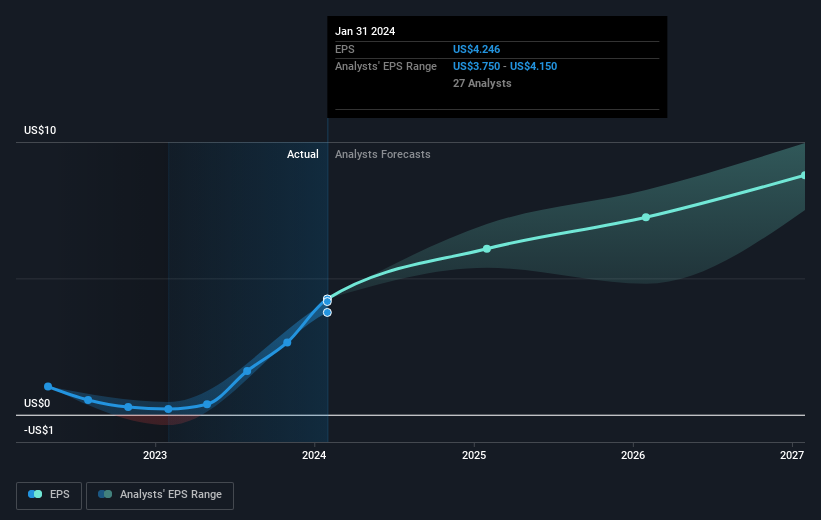Salesforce (NYSE:CRM) shareholders have earned a 14% CAGR over the last five years

Stock pickers are generally looking for stocks that will outperform the broader market. And while active stock picking involves risks (and requires diversification) it can also provide excess returns. For example, the Salesforce, Inc. (NYSE:CRM) share price is up 90% in the last 5 years, clearly besting the market return of around 73% (ignoring dividends). However, more recent returns haven’t been as impressive as that, with the stock returning just 56% in the last year , including dividends .
Let’s take a look at the underlying fundamentals over the longer term, and see if they’ve been consistent with shareholders returns.
Check out our latest analysis for Salesforce
While the efficient markets hypothesis continues to be taught by some, it has been proven that markets are over-reactive dynamic systems, and investors are not always rational. One way to examine how market sentiment has changed over time is to look at the interaction between a company’s share price and its earnings per share (EPS).
Over half a decade, Salesforce managed to grow its earnings per share at 24% a year. This EPS growth is higher than the 14% average annual increase in the share price. So it seems the market isn’t so enthusiastic about the stock these days. Of course, with a P/E ratio of 71.47, the market remains optimistic.
The image below shows how EPS has tracked over time (if you click on the image you can see greater detail).
We know that Salesforce has improved its bottom line lately, but is it going to grow revenue? If you’re interested, you could check this free report showing consensus revenue forecasts.
A Different Perspective
We’re pleased to report that Salesforce shareholders have received a total shareholder return of 56% over one year. Of course, that includes the dividend. Since the one-year TSR is better than the five-year TSR (the latter coming in at 14% per year), it would seem that the stock’s performance has improved in recent times. Someone with an optimistic perspective could view the recent improvement in TSR as indicating that the business itself is getting better with time. It’s always interesting to track share price performance over the longer term. But to understand Salesforce better, we need to consider many other factors. For example, we’ve discovered 1 warning sign for Salesforce that you should be aware of before investing here.
If you are like me, then you will not want to miss this free list of growing companies that insiders are buying.
Please note, the market returns quoted in this article reflect the market weighted average returns of stocks that currently trade on American exchanges.
Have feedback on this article? Concerned about the content? Get in touch with us directly. Alternatively, email editorial-team (at) simplywallst.com.
This article by Simply Wall St is general in nature. We provide commentary based on historical data and analyst forecasts only using an unbiased methodology and our articles are not intended to be financial advice. It does not constitute a recommendation to buy or sell any stock, and does not take account of your objectives, or your financial situation. We aim to bring you long-term focused analysis driven by fundamental data. Note that our analysis may not factor in the latest price-sensitive company announcements or qualitative material. Simply Wall St has no position in any stocks mentioned.




